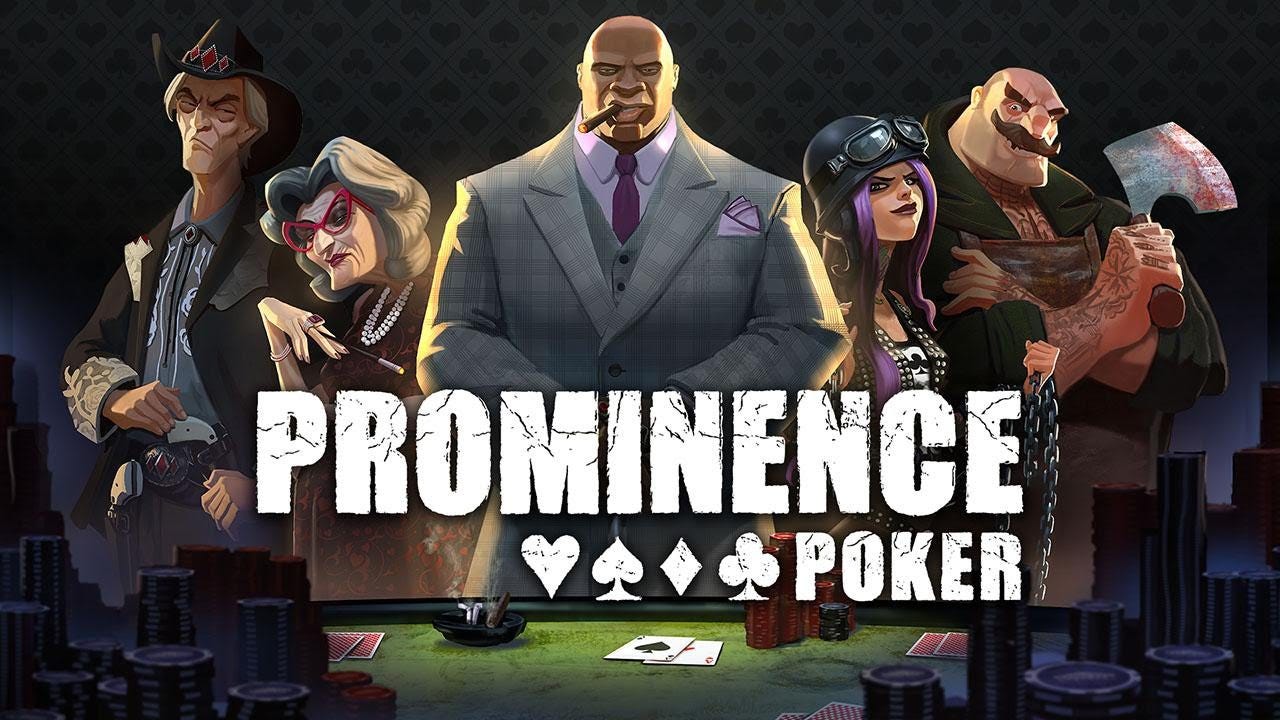The first of a multi-part guide series designed to take readers from having little to no knowledge of poker to being a profitable and competent virtual money low stakes player.
This part covers the very basics of Texas no limit hold ’em, the goal of the game, and how the game itself is played.
Introduction
Welcome to my efforts to make a guide on how to play No-Limit Texas Holdem (referred to from here as NLH) to a reasonable enough level to find it an enjoyable hobby. Don’t listen to people telling you that playing for fake money is pointless, this is only true if you intend on earning a living from the game. You can play from anything, from matchsticks to digital poker chips. It’s a game that can be a lot of fun, that takes a long time to master, and that you can take to whatever level you feel comfortable with.
This guide is designed to take you from “I want to play but I don’t even know the rules” up to a level where you are making deliberate and considered decisions on how to correctly play each hand, regardless of the number, type, and level of skill of the other players you are playing with.
Why play poker?
Poker is fun. It’s a game of skill, where over a long enough time the best players will always be at the top and the weakest players at the bottom. It’s also a game of incomplete information where over a small number of hands the results are dominated by chance and luck of the draw.
It isn’t just about the cards and odds; you also must learn to read people’s behaviour well and win battles of wits with the other people sat around the table. It’s one of those games where you can very quickly reach a level of competence at which the game is enjoyable but can continue to improve the level of your game for decades.
It’s also a great game to develop patience, composure under pressure, and problem-solving skills.
Don’t I have to be a maths genius to do well at poker?
No, you really don’t. Having some basic maths skills is useful, but unless you plan on becoming a professional, basic skills are all you need. Even at high levels, it is more important to accurately recognise the type of player you’re playing against and how often you can guess the strength of their hands from the way they’ve played them.
The Goal
Importantly, the goal of playing poker is not to win the most hands, it’s to win the most money/chips. You can win only a small handful of hands and fold all the others and still be very profitable. You need to learn how to make other players put in lots of chips on your good hands and how to invest as little as possible in the hands you end up folding.
The Basics
Typically, between 2 and 10 players (most commonly 2, 6 or 9) are found around an NLH table. Games are broadly split into two different types: cash/ring games where the blinds are fixed (see next chapter for what this means) and you can put more chips on the table whenever you like, and tournament games where the blinds regularly increase in value, and once you run out of chips you are out of the tournament.
Play consists of making bets of a certain number of chips, until everyone has either “folded” (decided they don’t have a good enough hand to pay chips with, and removed themselves from the hand), or until everyone has paid the same amount in that betting round. Play proceeds around the table in a clockwise direction, starting with the player after the big blind (more on this later) before the “flop” (the first three community cards placed on the table that are shared by every player) and starting on the small blind after the flop.
There is a maximum of four betting rounds, after which any players still playing compare their cards to see who has the best hand. This is called the showdown, and each player’s final hand is the best that can be created from their two “hole cards” (dealt at the beginning of each hand, face down, known only to the player) and the five community cards face up on the table. The winner takes all the money in the “pot” (basically where it all goes from everyone’s bets), and the hand is finished.
Once a hand has completed, the button (again, more on this later), small blind and big blind all move exactly one position clockwise, and a new hand begins.
The “Blinds”
In each hand, before any player is allowed to see the first three flop cards, they must first pay a small number of chips. This is known as the “blind”, and in cash games is normally between a 50th and a 300th of the buy-in (the total value of the chips that players can join the table with) on the table.
On each hand, there is a big blind who is forced to pay the blind, and a small blind to his right who must pay half of it and can choose whether to pay the other half later.
This system exists to prevent players deciding that the best way to win is to play as little as possible, playing only with the strongest hands. These players will slowly lose more chips to other players when they’re the big or small blind than they will win on the hands they choose to play.
In some games, there is also an additional “ante” which must be played by everyone every hand, which is normally quite small in value (typically the big blind divided by the number of players on the table). This is designed to encourage players to play more hands.
Playing hands – pre-flop
When play reaches you, you can choose to “fold” your cards (normally by pushing them into the middle of the table, face down, removing yourself from the hand), pay the blind, or raise to a larger amount – perhaps you have great cards, and you want your opponents to pay more to play. In NLH you can raise as much as you like (hence the “no limit”). If someone has raised already, then you need to pay this amount rather than the blind, and the small and big blinds must pay the difference as well (if the big blind is 100, and someone has raised to 400, the big blind still owes 300 before he gets to see the flop), although again you can choose to raise it yourself to an even greater amount if you like, and play will go around the table again until all players have paid the same amount.
Playing hands – post-flop
Once everyone has either paid the same amount as each other or folded their cards, three cards are drawn from the deck and placed face up on the table (the “flop”). At this point, all remaining players can now make a full five card hand and have some idea how strong their hand is.
From now on, no-one needs to pay any money unless a player voluntarily bets. There is now another betting round starting with the small blind, and you can either “check” (basically staying in the hand, but not placing any money in the pot), bet, or fold. Once someone has bet, the choices are either to “call” (match the bettor’s bet), “raise” (put the money in and an extra amount, from the same amount of money again up to all your chips), or fold. Once everyone has either paid the same amount or folded their hand, play progresses.
After this betting round, another card is drawn (known as the “turn”), and the third betting round begins in the same way as after the flop. Then the last card is then drawn (known as the “river”), and a final betting round takes place, followed by the showdown where the players all show their cards (starting with the last person to bet or raise on the river, or starting with the small blind if everyone checks the river), and the best hand wins the pot.
Aces can represent a “1” or “1 above a King” depending on which helps your hand the most, and there’s a full ranking list of completed hands that you can load at any time while you’re at a table until you know them. I’ve taken the liberty of putting them all on the next page, with the % frequency at which they happen (assuming everyone plays every hand their dealt all the way to the showdown).
Order of play summary
- Two cards are dealt to each player, face down
- First betting round, starting with the player after the big blind – “Pre-flop”
- All players must pay the same amount (at least the big blind), before the next stage
- The “flop” is dealt – the first three community cards on the table
- Second round of betting, starting with the small blind
- Betting is entirely optional, but all players must pay the same amount before the next stage
- The “turn” card is dealt – the fourth table community card
- Third round of betting, starting with the small blind, same as the second round
- The “river” card is dealt – the fifth table community card
- Fourth round of betting, starting with the small blind, same as the second round
- Showdown – the players show their hands, starting with the small blind or the last aggressor.
- The player with the best hand takes the pot.
Final hand strength
High Card: No pair can be made from any of the 7 cards (your two and the five community cards). The highest value card out of the hole cards of the remaining players wins. (17.4%)
Pair: A single matched pair can be made where the value (but not suit) of the cards is the same. The highest value pair wins, using the highest non-paired card as a tiebreaker. (43.8%)
Two pair: Two matched pairs can be made. In this the highest top pair wins, followed by the highest second pair if more than one person has the same top pair. (23.5%)
Trips/Three of a kind: Three cards of the same value can be made from the 7 cards. (4.83%)
Straight: Using the 7 cards available, a player can make a consecutive string of 5 cards in ascending/descending value, like 4-5-6-7-8 or T(ten)-J-Q-K-A. Suit not important. (4.62%)
Flush: Using the 7 cards available, a player can put a hand together of 5 cards of the same suit. If more than one player has a flush, the highest non-community card wins. (3.03%)
Full House: A player can put together a three of a kind and a pair out of 5 cards. (2.60%)
Four of a kind: A player can put together all four cards in a deck of the same value in their 5-card hand. (0.17%)
Straight flush: The same as a straight, but where all sequential cards must also be of the same suit (0.03%). A straight flush that runs T-J-Q-K-A is known as a Royal flush and is the best possible hand.
The next chapter focuses on the first step of learning how to play, which is learning how to play like a “rock” (more on player types in chapter three).



